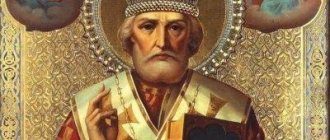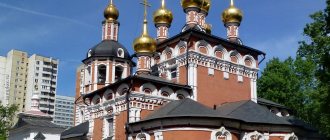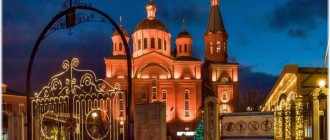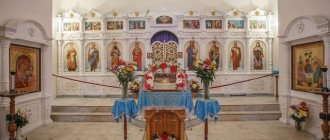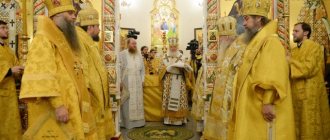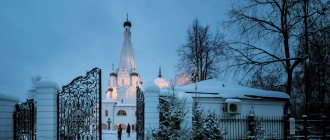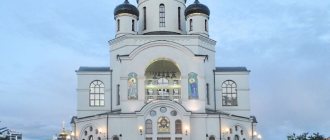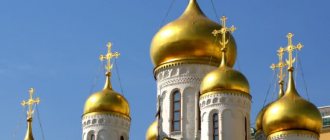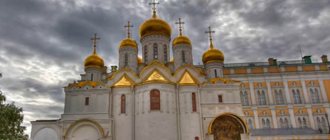Mir
Russia Moscow region Voskresensk Resurrection Church (Voskresensk) Map is loading…
{"format":"leaflet","minzoom":false,"maxzoom":false,"limit":50,"offset":0,"link":"all","sort":[""], "order":[],"headers":"show","mainlabel":"","intro":"","outro":"","searchlabel":"\u2026 \u0441\u043b\u0435\ u0434\u0443\u044e\u0449\u0438\u0435 \u0440\u0435\u0437\u0443\u043b\u044c\u0442\u0430\u0442\u044b","default":"","import-annotation":false,"width ":"auto","height":"350px","centre":{"text":"","title":"""link":"""lat":55.30528000000000332647687173448503017425537109375,"lon": 38.7252799999999979263520799577236175537109375,"icon":""},"title":"","label":"","icon":"","lines":[],"polygons":[],"circles":[ ],"rectangles":[],"copycoords":false,"static":false,"zoom":8,"defzoom":14,"layers":["OpenStreetMap"],"image layers":[] ,"overlays":[],"resizable":false,"fullscreen":true,"scrollwheelzoom":true,"cluster":false,"clustermaxzoom":9,"clusterzoomonclick":true,"clustermaxradius":80, "clusterspiderfy":true,"geojson":"","clicktarget":"","showtitle":true,"hidenamespace":false,"template":"","userparam":"","activeicon": "","pagelabel":false,"ajaxcoordproperty":"","ajaxquery":"","locations":[{"text":"\u003Cb\u003E\u003Ca href=\"/palomnik/%D0% 92%D0%BE%D1%81%D0%BA%D1%80%D0%B5%D1%81%D0%B5%D0%BD%D1%81%D0%BA%D0%B8%D0%B9_% D1%85%D1%80%D0%B0%D0%BC_(%D0%92%D0%BE%D1%81%D0%BA%D1%80%D0%B5%D1%81%D0%B5%D0 %BD%D1%81%D0%BA)\» title=\»\u0412\u043e\u0441\u043a\u0440\u0435\u0441\u0435\u043d\u0441\u043a\u0438\u0439 \u0445\u0440\u0430\ u043c (\u0412\u043e\u0441\u043a\u0440\u0435\u0441\u0435\u043d\u0441\u043a)\»\u003E\u0412\u043e\u0441\u043a\u0440\u0435\u0441\ u0435\u043d\u0441\ u043a\u0438\u0439 \u0445\u0440\u0430\u043c (\u0412\u043e\u0441\u043a\u0440\u0435\u0441\u0435\u043d\u0441\u043a)\u003C/a\u003E \u003C/b\u003E\ u003Chr /\u003E\u003Ca href=\»/palomnik/%D0%A1%D0%B2%D0%BE%D0%B9%D1%81%D1%82%D0%B2%D0%BE:%D0%90 %D0%BD%D0%BD%D0%BE%D1%82%D0%B0%D1%86%D0%B8%D1%8F\" title=\"\u0421\u0432\u043e\u0439\u0441\u0442 \u0432\u043e:\u0410\u043d\u043d\u043e\u0442\u0430\u0446\u0438\u044f\»\u003E\u0410\u043d\u043d\u043e\u0442\u0430\u0446\u0438 \u044f\u003C/a\ u003E: "'\u0412\u043e\u0441\u043a\u0440\u0435\u0441\u0435\u043d\u0441\u043a\u0438\u0439 \u0445\u0440\u0430\u043c"' \u043f\u0 43e\u0441\u0442\u0440 1898 \u0440\u0435\u0441\u0442\u044c\ u044f\u043d\u0438\u043d\u0430 \u042f.\u0412. \u041b\u0430\u0440\u0438\u043d\u0430 \u043f\u043e \u043f\u0440\u043e\u0435\u043a\u0442\u0443 \u0430\u0440\u0445\u0438\u0442 \u0435\u043a\u0442\u043e\u0440 \u0430 \u041d.\u041f. \u041c\u0430\u0440\u043a\u043e\u0432\u0430, \u0432\u043c\u0435\u0441\u0442\u043e \u0434\u0435\u0440\u0435\u0432\u044f\u043d \u043d\u043e\u0439 \u0446\ u0435\u0440\u043a\u0432\u0438 XVI \u0432\u0435\u043a\u0430.","title":"\u0412\u043e\u0441\u043a\u0440\u0435\u0441\u0435\u043d\u0441\u 043a\u0438 \u0439 \u0445\u0440\u0430\u043c (\u0412\u043e\u0441\u043a\u0440\u0435\u0441\u0435\u043d\u0441\u043a)»»link»:»»»lat»:55.3052800000 0000332647687173448503017425537109375," lon":38.7252799999999979263520799577236175537109375,"icon":""}],"imageLayers":[]}
55.305492; 38.725554
Russia, Moscow region, Voskresensk, Voskresenskaya street, 35
Voskresensk, Moscow region 140200
Russia
Telephone:
+7 (496) 442 30 97
Email:
Resurrection Church
built in 1898 through the efforts of the peasant Ya.V. Larin, designed by architect N.P. Markov, instead of a wooden church of the 16th century.
History[edit]
The village of Voskresenskoye with a wooden church in honor of the Resurrection of Christ is mentioned in the Scribe books for 1577.
The current church was built from 1881 to 1898. designed by architect Nikolai Markov. Documents show that the fundraiser for the construction of the temple was a peasant from the village of Novlyanskoye, Yakov Venediktovich Larin, who went all the way to St. Petersburg for this purpose. The church bell tower was erected in 1909. The parishioners carried the bell brought to the Voskresensk station to the village in their arms (about a kilometer), and listened to the first bell ringing on their knees.
In addition to the central altar, consecrated in honor of the Resurrection of Christ, the church has two more chapels - in honor of the Intercession of the Most Holy Theotokos and in the name of the Myrrh-Bearing Women.
In the mid-1930s. the temple was closed and destroyed. Originally from the village of Voskresensky is priest Pyotr Orlinkov, ranked by the Church as a member of the Council of Holy New Martyrs and Confessors of Russia (executed in 1937 at the Butovo training ground).
The temple was returned to believers in 1991. It has now been completely restored.
Russian Orthodox Church Moscow Patriarchate Church of the Resurrection of Christ
Welcome to the website of the Church of the Resurrection of Christ in the village of Popovka!
On our website you can download the schedule of services, find out the history and news of our Temple, read interesting articles about Christian life, and look at photographs of holidays and significant events.
Address: 143396 Moscow, Troitsky Autonomous Okrug, pos. Pervomaiskoe, village. Popovka
Clergy : Archpriest Andrey Shlykov
Dear brothers and sisters!
On October 3, 2021, a Sunday School for children from 4 to 17 years old opens in our church.
Registration for school by phone: 8-915-440-79-99 Olga Evgenievna.
The classes are free. Come!
With the blessing of His Holiness the Patriarch, a special group of hospital priests for Moscow was created, who underwent special training.
You can call a priest to see a coronavirus patient by calling the number of the Hospital Commission at the Moscow Diocesan Council.
MEMORIAL NOTES MAY BE SUBMITTED BY EMAIL OR WHATSAPP
In the notes write Orthodox Christians in the church name.
Daily calendar
The temple is three-altared. The main altar is dedicated to the Resurrection of Christ in memory of the lost shrine, one altar is dedicated to Equal-to-the-Apostles Prince Vladimir, the second to St. Sergius of Radonezh.
At the moment, the external decoration of the temple has been completely completed, a fence has been built, and the interior painting is being completed. Despite the fact that the general construction work has been completed, there are still a few nuances that need to be completed in order for the temple to be commissioned in all its splendor. In particular, complete the interior work.
The foundation stone for the temple in honor of the Resurrection of Christ was carried out by Archpriest Sergius Makhonin in April 2021.
We express our words of gratitude to our builders, investor, administration and all those without whom we could not build this beauty! Christ save you all!
Chief architect of the project: Shchepetkov D.N. Designer: Architectural and Restoration Workshop "FAROS" LLC, Moscow General contractor: KSK-Holding LLC, Moscow Start of construction: April 2021 Architectural solutions: The architecture of the Church of the Resurrection of Christ is designed in traditional forms of Russian temple architecture.
Architectural solution:
The architecture of the Church of the Resurrection of Christ is designed in traditional forms of Russian church architecture. The main volume of the pillarless temple is a quadrangle, 10x10 m in axes. It is covered with a vault and crowned with an impressive dome (the diameter of the dome is 6 m) on a high drum. On the outside, the decorative design of the pillarless quadrangle is made in the traditional forms of a three-part enclosed volume. On the eastern side there is an altar in the form of three apses, which end with conchs. On the other three sides, northern, western and southern, the quadrangle is surrounded by a one-and-a-half-story closed gallery with a pitched roof on each side. In the northern and southern wings of this extension, northern and southern aisles with small altars are symmetrically located. The altars of both aisles are symbolically designated by small domes. In the western part of the gallery there is a baptismal room, service, auxiliary and technical rooms, and in the same part there is a staircase leading to the second floor. On the second floor, under a sloping ceiling, there are technical rooms and a passage to the choir, the mezzanine of the quadrangle and the belfry, which is located on the south side of the quadrangle, above the southern aisle.
Parish history:
Church of the Resurrection of Christ in the village. Popovka of Moscow of the Russian Orthodox Church (Moscow Patriarchate) is included in the “200 churches” construction program.
On March 2, 2021, a prayer service was held for the beginning of construction of the temple.
On November 16, 2021, a memorial stone was laid (with a capsule).
On October 30, 2021, the rite of the Exaltation of the Cross and the consecration of the domes was performed.
On the same day, domes and crosses were installed on the erected temple.
History of the area:
The village of Popovka is located within the village of Ptichnoye - the former village of Voskresenki, Podolsk district. The village of Voskresenki (Voskresensky) on the Desna River (Malaya Pakhra) is mentioned in the scribe books of 1627; the name and status of the village indicate the existence of the Resurrection Church already at that time. The owner of the land, Count P.M. Bastuzhev-Ryumin, founded an estate here at the end of the 17th century, on the territory of which in 1701 the stone Church of the Resurrection of Christ was consecrated. The estate existed, changing owners, until the October Revolution. In 1918, it was transferred to the Krasnoye Pole state farm, which was soon transformed into the Ptichnoye breeding farm. In 1938, the temple was completely destroyed.
History of the temple
Holy Prince Daniil The history of the Church of the Resurrection of the Word in Danilovskaya Sloboda is closely connected with the oldest of Moscow monasteries - the St. Danilov Monastery, founded in 1270-1280 by the holy noble prince Daniil Alexandrovich - the first of the Moscow princes. The construction of the Danilovsky Monastery began with the construction of a wooden temple in the name of the heavenly patron of the prince - the Venerable Daniel the Stylite.
To provide for the daily needs of the monastery, several peasant households were located near it, from which the Danilovskaya Sloboda was subsequently formed. Prince Daniel himself, at the end of his life, took monastic vows in the monastery he founded, and was buried here in 1303. His grave became famous for many miracles and healings.
In 1330, after the construction of the Church of the Transfiguration in the Kremlin, Prince Ivan Kalita moved the monks of the Danilov Monastery to it. With the departure of most of the monks, the monastery began to wither, and the time of oblivion and desolation came. In the 16th century Degree Book it is described as follows:
“In the many summers that have passed, the Danilovsky monastery has become impoverished... as if there was no trace of the monastery, only one church remained in the name of St. Daniel the Stylite, and the place was called the village of Danilovsky, but the monastery was not heard of, and it never existed.”
Burial of Saint Prince Daniel
The Temple of Daniel the Stylite, which previously belonged to the monastery, became a parish church. A rural cemetery was formed around it. Tradition tells of the miraculous appearance of Daniil Alexandrovich, who was buried here (his grave was lost), to Ivan IV the Terrible, after which the monastery was restored in 1560, but not in its original place, but 500 m to the north. At that time there was a wooden parish church in the ancient cemetery. According to the chronicle of 1627–1628, behind the monastery there was:
“Sloboda, which from time immemorial was known as the village of Danilovskoye, and in it the church of St. Danil the Stylite, wooden, kletzki (that is, on a foundation of logs laid one on top of the other in the form of a cage), a monastery structure and parish people, and at the church (priest, church sexton, marshmallow) ... a cell, and in it the poor live and eat from the Church of God, and in the settlement there are peasants ... (16 households, 21 males) ... and in the same settlement there are bobyleys ... (12 households, 12 males).”
Moscow Danilov Monastery.
1700 In 1699, on the site of the dilapidated church of St. Daniel the Stylite, a new temple was built at the expense of parishioner Fyodor Vasiliev - the predecessor of the existing one. Its foundation, found during archaeological excavations in 1989, was preserved in the basement of the now existing church.
In 1722, the throne of St. Daniel the Stylite was no longer listed in the temple, and the main altar was consecrated in honor of the feast of the Renewal of the Church of the Resurrection of Christ in Jerusalem (Resurrection of the Word). This name contained the idea of the celebration of the renewal of holy places revered by Christians. The three remaining chapels were consecrated in honor of St. Nicholas the Wonderworker, the Prophet Elijah and the holy chief apostles Peter and Paul.
I. N. Rybnikov
Church of the Resurrection of Christ, 1882
View of the temple from the Moskva River. Beginning of the 20th century
The existing temple was built in 1834–1837 at the expense of a wealthy local resident, owner of the Danilovskaya manufactory, honorary citizen of Moscow Ivan Nazarievich Rybnikov.
The Church of the Resurrection of the Word was built by the architect F. M. Shestakov and designed in the late Empire style: a massive cube of the main temple, decorated from the north and south with six-column Ionic porticoes with pediments, topped with a dome with a light rotunda, continues to the west with a large refectory and a three-tier bell tower above the main entrance. In addition to the three chapels from the old church, a fourth was added to the refectory - in the name of St. John Chrysostom. To the southwest of the temple, a small one-story clergy house has been preserved.
The temple was consecrated in 1837. In accordance with the resolution of St. Philaret (Drozdov), Metropolitan of Moscow, dated June 12, 1845, on church land, hereditary citizens Nikolai and Pavel Rybnikov established a women's almshouse for twelve people and a parochial school.
In 1872, on the initiative of the rector of the church, Priest Vasily Smirnov, and with the blessing of St. Philaret, the church was insulated by installing ovens in its basement.
Brothers of St. Daniel's Monastery, 1927
Holy Martyr Seraphim (Shchelokov)
View of the temple from the north side, 1932
Church of the Resurrection of the Word. 1986
After the revolution of 1917, the Resurrection Church continued to operate; the remaining free monks of the Danilovsky Monastery moved here after its closure in 1930. The shrine with the relics of St. Daniel of Moscow was also transferred here.
But in 1932, services stopped here too. Most of the clergy who served were arrested and subjected to repression, many were shot. Two of them - Archimandrite Seraphim (Shchelokov) and Abbot Sergius (Chernov) were subsequently glorified as holy new martyrs and confessors of the Russian Orthodox Church. The closure of the temple itself followed in 1933. The utensils were looted, and the holy relics of St. Daniel disappeared.
Later, the building was occupied by various production institutions, the longest being the Moscow Association for the Production of Umbrellas. The interiors of the church were completely destroyed, and the domes with crosses on the outside were lost.
In 1983, the Danilov Monastery complex was returned to the Patriarchate, but the temple still remained occupied by a factory. Formally handed over to believers in 1985, the Church of the Resurrection became operational again only in 1989, when the chapel in the name of St. Nicholas was consecrated in a small rite. By the time the temple was handed over in 1988, more than half of the frescoes could not be restored or were destroyed.
Through the care of the long-term rector, Archpriest Gennady Borozdin, after lengthy restoration work completed in 1998, the church was returned to its historical appearance: the completions were restored, the later partitions and ceilings were dismantled, the paintings and the Empire-style iconostasis were recreated.
Great consecration of the temple, August 14, 1998
The great consecration of the temple was performed by His Holiness Patriarch Alexy II on August 14, 1998, on the feast of the origin of the honorable trees of the Life-giving Cross of the Lord. His Holiness the Patriarch, co-served by Archbishops Sergius of Solnechnogorsk and Arseny of Istra, performed the rite of consecration of the central Resurrection altar in the Church of the Resurrection of the Word, as well as side chapels in the name of St. John Chrysostom and St. Nicholas the Wonderworker. In memory of this event, His Holiness the Patriarch donated to the temple an icon of St. Pitirim of Tambov.
From the words of His Holiness Patriarch Alexy II on the day of the consecration of the Church of the Resurrection of the Word in Danilovskaya Sloboda:
“I remember 1986, when I was the chairman of the Commission for the acceptance of restoration work and construction on the territory of the St. Daniel Monastery. The monastery was transferred to the Church in 1983, and by 1986 it was already acquiring its modern appearance, and here, in the Church of the Resurrection of the Word, there was a factory for the production of umbrellas. In response to our request for permission to carry out work to restore the historical appearance of the temple, the director of the plant replied that this issue was discussed at a party meeting and for ideological reasons the plant could not work under crosses. Then I said to the director: “How are party congresses held in the Moscow Kremlin, overshadowed by the crosses of the Kremlin cathedrals?” A week later, consent was given and we began to install crosses and improve the appearance of the temple. In 1987, the plant moved out and vacated the temple premises. All the paintings and all the interior decoration of the temple were lost. And now, ten years later, the temple has been restored to its former splendor and beauty.”
